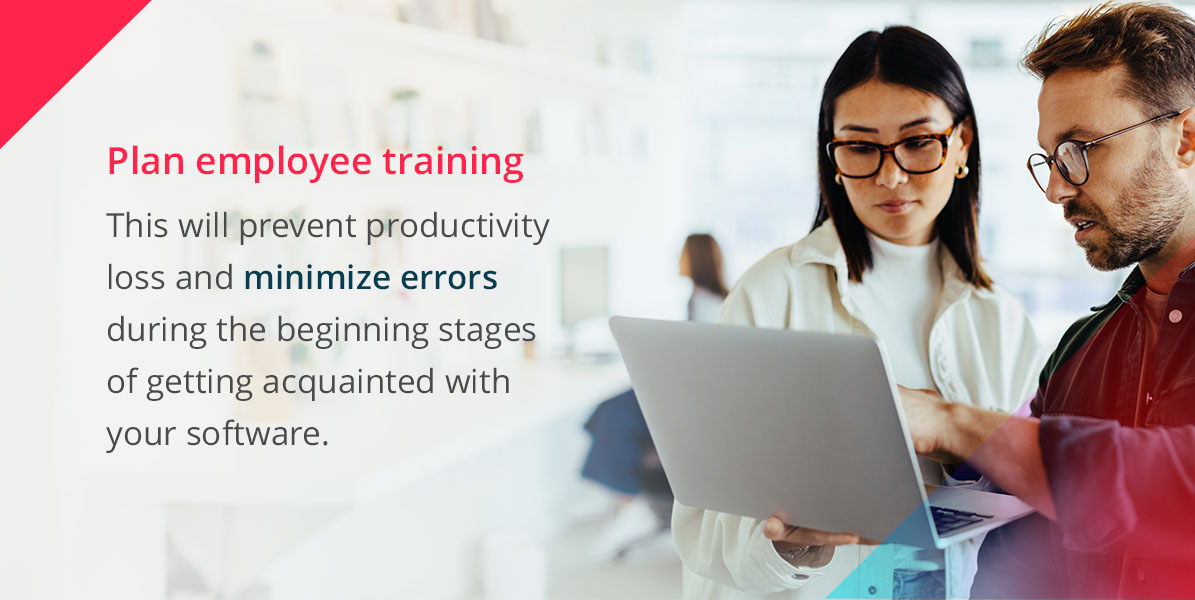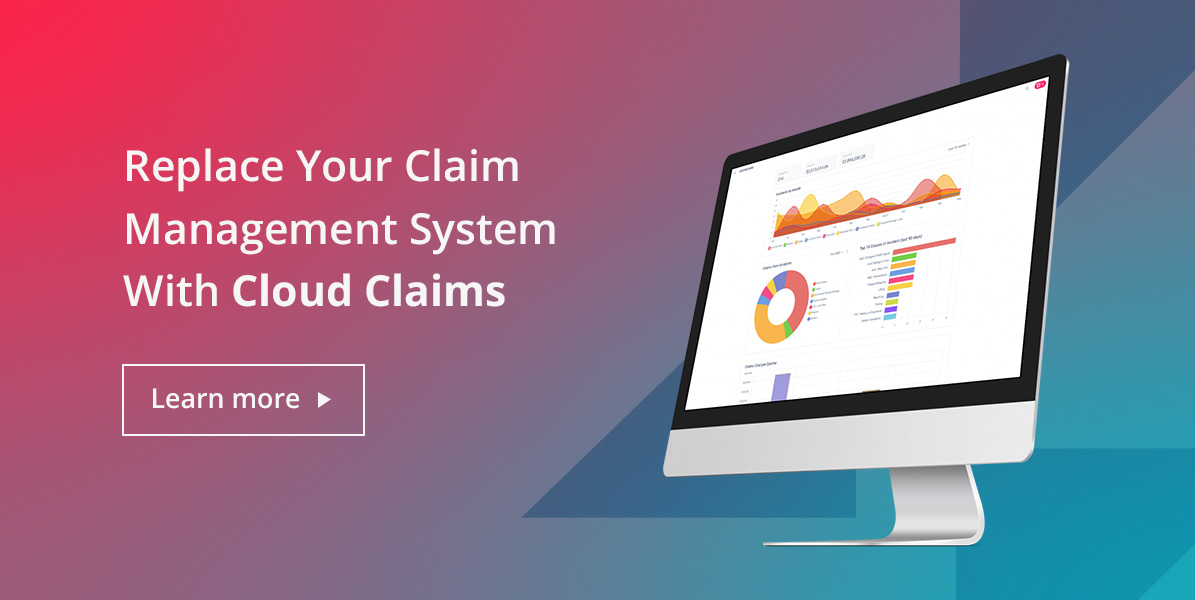Outdated software can pose many risks for businesses that rely on accurate data and efficient processes. Systems that do not keep up with changing technologies inhibit smooth operations and create inefficient workflows. Replacing a claims management system that may already be obsolete creates more opportunities for agile processes in your business. It minimizes work disruption, adapts to organizational needs and may increase overall efficiency.
Assessing your company’s needs before replacing your legacy system is vital to choosing the right one. A smooth transition between a legacy system and a new one requires planning and careful execution.
Assess the Need to Replace Your Claims Management System
Start by identifying the shortcomings you see in your current claims management system. Essential elements of a well-functioning system include scalability with your business, no redundant data entry, an easy-to-use interface, quality reporting, and compliance with internal policies and external regulatory requirements.
During this assessment, it is important to note that “legacy” only sometimes refers to older systems. The risks of a legacy system can relate to any claims management system that does not fulfill its requirements. Risks of using legacy systems include:
- Performance concerns: Legacy software may require more manual input, like re-keying data from other system, which demands additional human resources. This diverts employees’ focus from important tasks to troubleshoot software issues.
- Documentation control: Many legacy systems do not track claim documentation (e.g. photos, emails, and notes) internally, relying on external shared drives or email. This create inefficiencies and can lead to poor decisions due to missing information.
- Compatibility issues: Given the monolithic architecture of legacy software, updates can cause system conflicts or may not be available. Additionally, legacy software might not be compatible with new application programming interfaces (APIs), impeding integration.
- Poor security: Older systems run a higher risk for security breaches, such as the 70 percent of health care systems that fell victim to a cyber attack in 2018.
Plan to Replace Claims Management Software
Determine which functions will most complement your business operations. Improving workflow, employee satisfaction and stakeholder insight is paramount, so reach out to your team to establish what functions will make a difference day-to-day. Include these additional measurements to plan for an optimal replacement:
- Find the right partner: Select a reputable software provider to ensure you get a high quality claims management system. An additional feature to look out for is unlimited tech support, which will simplify the implementation and maintenance processes.
- Budget: The initial cost of a new system may be high, especially if your current system is particularly outdated. Ask your intended service provider for an accurate cost estimate to help with your planning.
- Plan employee training: Include training in your budget for updating claims management systems. This will prevent productivity loss and minimize errors during the beginning stages of getting acquainted with your software.
- Data migration: If you need to migrate data from the legacy system into the new one, ensure that the software you are considering will be able to handle the volume and complexity of data you plan to transfer.
- Maintenance and support: As you consider different vendors, assess the level of support they provide during and after sales. It is especially important to note their availability for ongoing maintenance, troubleshooting and software updates.
Choose the Right Claims Management Software
Once you plan to acquire a new claims management system, you need to define the features your team needs from the new system. While each industry’s needs will differ, some general characteristics that ensure success are:
- Scalability: Ensure the new system will scale with your business growth and the integration process will be simple.
- Cost analysis: In addition to a budget for upfront costs, consider ongoing system expenses. Maintenance, support and upgrades may incur additional overhead. Calculate the total cost of ownership for the system you are interested in.
- User-friendliness: A claims management system should be intuitive to help your team adapt without extensive training or prolonged downtime.
- Real-time data and reporting: Real-time insight into the status of claims will offer quick turnaround times and bypass any bottlenecks. These benefits will affect customer satisfaction, boosting your business reputation.
- Customization: A flexible system that allows customization according to your needs enhances operational efficiency. These systems will also easily accommodate future changes and growing digital requirements from your industry.
- Compliance and security: The new system should help your operations meet security standards and compliance regulations. Claims data often contain personally identifiable information (PII) and protected health information (PHI), so making sure your vendor has a SOC 2 certification (or similar) will give you confidence that the system you will rely on is secure.
Create a Smooth Transition
Replacing your legacy claims management system requires meticulous steps to ensure you do not lose any data in the system. It takes careful planning, clear communication and adequate training to transition smoothly when updating claims management software. Follow these steps to create a smooth migration to your new system:
- Transition plan: Detail the transition plan, outlining goals, timelines, key milestones and specific roles and responsibilities of various stakeholders.
- Training: Schedule training sessions for everyone using the new claims management system. Ensure that this training helps them understand new features, functionalities and workflow changes. Create online tutorials and guides for employees to reference when they need to. You can also ask your provider about demo systems for training sessions.
- Data assessment: Evaluate the data in your legacy system. Create a strategy to migrate that data to the new system that maintains accuracy and integrity. Working with a project manager from your team or service provider throughout this process is helpful.
- Implement in phases: Consider implementing your new system in stages. This allows for gradual adaptation, minimizing the migration’s impact on daily operations.
- Open communications: Remain consistent and transparent in your communication with stakeholders during this transition. Ensure everyone is up-to-date on changes, progress and timelines.
- Evaluation: Gather feedback from stakeholders and conduct post-implementation reviews once the system is in place and used daily. Evaluations allow you to address challenges with your service provider and identify areas with room for improvement.
Replace Your Claims Management System With Cloud Claims
Familiar, legacy systems may have a comfort in them for stakeholders but ignoring business growth, security and efficiency will create big costs down the line. An agile claims management system will ensure you have accurate documentation and open up opportunities to reduce risk and control claims costs, no matter what industry you’re in.
APP Tech understands your business’s pressing needs in its claims management processes. Our claims management systems cater to complex and diverse portfolios with ease. Cloud Claims streamlines processing, prevents data duplication and offers user-friendly reporting. Learn more about this system and contact APP Tech for more information about how you can seamlessly transition into your new claims management system.









